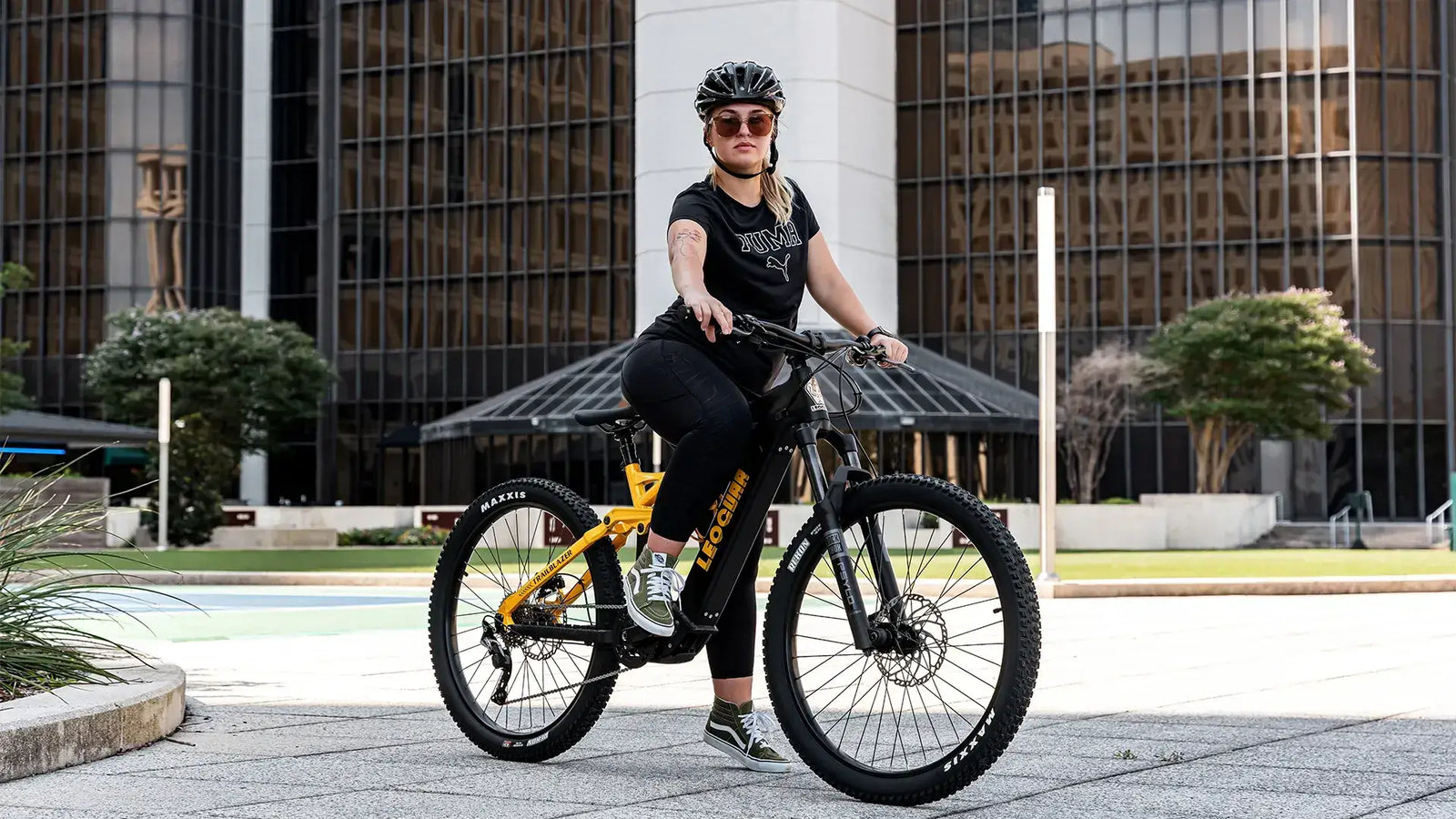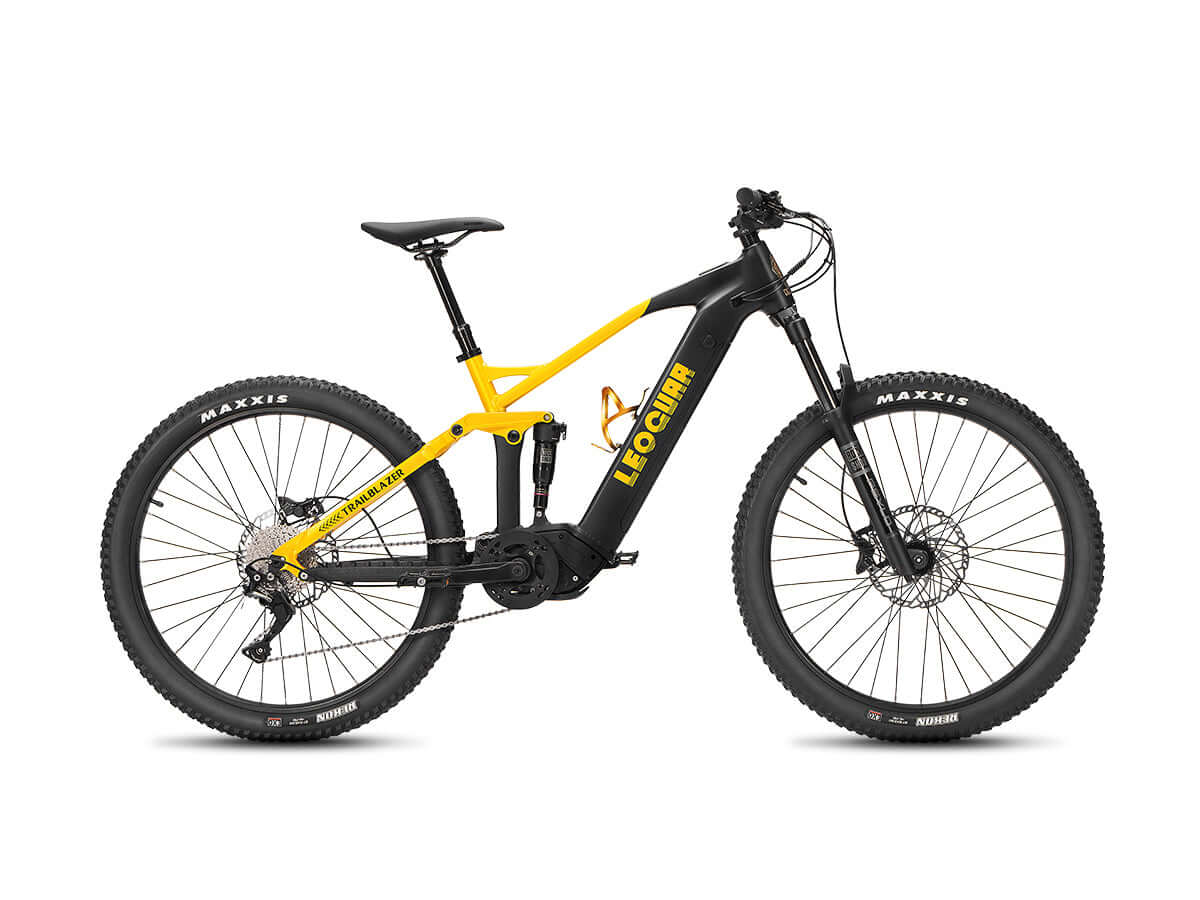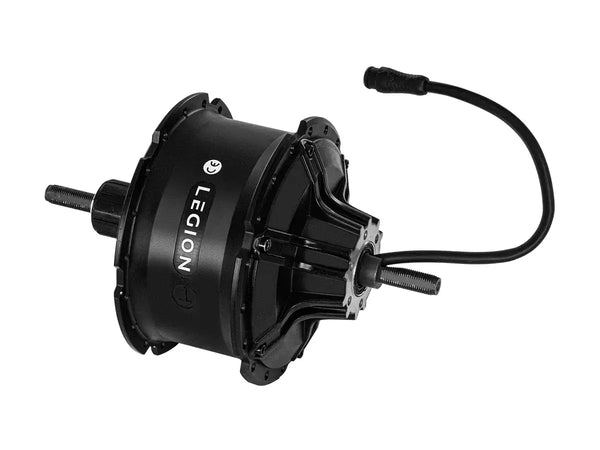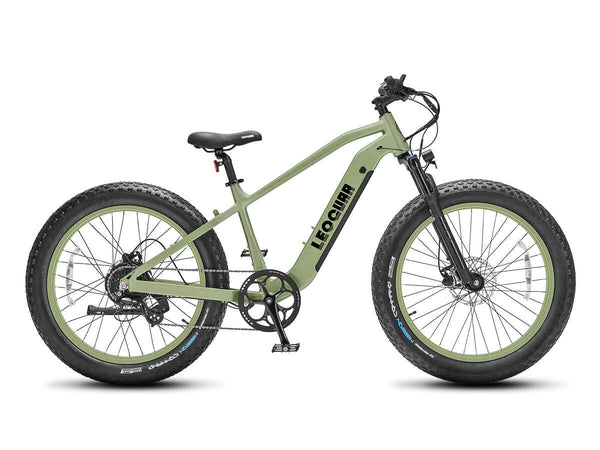
Torque vs Watts: Electric Motor Power Guide for Ebikes
It's A Partnership
When comparing electric bike motors, it's not a battle of torque vs watts. It's a partnership between the two. A motor with high wattage but low torque will feel sluggish off the line. On the other hand, a lower-wattage motor with high torque can feel surprisingly powerful and responsive when you start riding. To make the right choice, you must understand how they work together to give you the best riding experience. Think of it this way:
Torque (Newton-meters or Nm) is the initial twisting force. It's the "grunt" that gets you moving from a dead stop and shoves you up a steep hill with confidence. It's the feeling of immediate, satisfying acceleration when the light turns green and you need to keep up with traffic.
Watts (W) is the rate of work over time. It's the "horsepower" that helps you sustain speed once you are moving at a good pace. It's the power that keeps you cruising comfortably at your desired speed on a long, flat road without getting tired.
The ideal ebike motor has a healthy balance of both torque and watts. The "right" balance for you depends entirely on where and how you ride your bike. This guide will help you decode the numbers and find the perfect motor for your specific needs.
The Fundamentals
To truly understand your ebike, it helps to know the basic principles behind its power. Let's break down these core concepts into simple terms that make sense.
What is Motor Torque?
Torque is a measure of rotational force, expressed in Newton-meters (Nm). It's the force that causes rotation around a point, like the center of your bike's wheel. Imagine using a wrench to turn a stubborn bolt that won't budge. A longer wrench gives you more leverage, making it easier to turn the bolt with less effort from you.
In an ebike motor, higher torque is like having a longer wrench. It provides more force to turn the wheels, especially against resistance like your body weight, gravity on a hill, or the inertia of starting from a standstill. This is what experts refer to as the rotational power of the motor, and it's what you feel as that immediate "punch" when you start pedaling.
What are Motor Watts?
Watts (W) measure power, which is the rate at which energy is used over time. If torque is the initial push that gets you going, watts represent the endurance to keep pushing at a specific rate. It's what allows the motor to maintain its output to help you hold a high speed for longer periods.
When looking at spec sheets, you'll often see two different watt figures:
- Nominal Watts: This is the continuous power the motor can sustain over a long period without overheating or breaking down. This is the most realistic and important number for gauging a motor's true capability in real-world riding.
- Peak Watts: This is the maximum power the motor can output for short bursts, like during a quick acceleration or climbing a steep hill. While impressive in marketing materials, it's less indicative of real-world, everyday performance that you'll actually experience.
The Inseparable Relationship
Torque and watts are not independent of each other. They are linked by a simple formula: Power (Watts) = Torque x Rotational Speed (RPM). This mathematical relationship is crucial to understanding how your bike will feel when you ride it.
This equation perfectly explains the feeling you get when riding different types of terrain. At low speeds (low RPM), like when starting on a hill, the motor can produce its maximum torque. You feel a powerful surge that pushes you forward. As your speed and the motor's RPM increase, there is often an inverse relationship between torque and speed. The torque may decrease while the power (watts) output keeps you cruising efficiently at higher speeds. This is why high torque is for getting going and high wattage is for staying going.
| Feature | Torque (Nm) | Watts (W) |
|---|---|---|
| What it is | Rotational Force | Rate of Energy Use |
| What it feels like | The "punch" or "grunt" | The "endurance" or "speed" |
| Best for... | Starting, accelerating, climbing hills | Maintaining high speed on flat ground |
| Common Analogy | Leverage on a wrench | A marathon runner's pace |
What Kind of Rider?
Technical specifications only tell half the story of what makes a great ebike. The best ebike motor for you depends entirely on your riding style and where you plan to use your bike. By identifying your primary use case, you can prioritize the specs that truly matter and avoid paying for power you don't need. We've ridden countless motor combinations, and the difference is immediately noticeable when you find the right match.
The Urban Commuter
- Riding Style: Stop-and-go city traffic, short but sharp overpasses, carrying a backpack or panniers with a laptop and lunch. Your ride is a mix of bike lanes and sharing the road with cars, requiring quick responses to changing traffic conditions.
- What Matters Most: High Torque for quick acceleration.
Why: In the city, your ride is defined by constant acceleration from stops. From green lights, stop signs, or after filtering through traffic, you need to get up to speed quickly for safety and to keep up with the flow of traffic. We've felt the frustration of a low-torque motor lagging at a green light, versus the confidence a high-torque motor gives you to merge decisively into traffic. Look for a motor with 60-85 Nm of torque for the best urban riding experience. This will feel responsive and zippy, even if it's a legally regulated 250W or a 500W motor. High sustained wattage is less critical, as you rarely maintain a high top speed for long stretches in an urban environment with frequent stops.
The Hill Climber
- Riding Style: You live in a hilly region or love tackling steep, sustained climbs on roads or technical off-road trails. Your rides are a constant battle against gravity, and you need reliable power to reach the top.
- What Matters Most: Maximum Torque for climbing power.
Why: Torque is the raw force that directly counteracts gravity when you're pointed uphill. When you're climbing a steep incline, the resistance is immense, and only a high-torque motor can keep the cranks turning without forcing you to stand up and mash the pedals with all your strength. For serious mountain biking or regions with relentless hills, look for motors with 85 Nm or more of torque. This is the domain of high-performance mid-drive motors from brands like Bosch, Shimano, and Brose that are specifically designed for challenging terrain. In this scenario, a high torque rating is far more important than the peak watt number. It's what gets you to the top, as demonstrated by professional riders on steep terrain.
The Cargo Hauler
- Riding Style: Your ebike is your minivan replacement. You're hauling groceries, carrying kids in a child seat, or towing a trailer with camping gear. The total weight of you, the bike, and your cargo is significant and puts extra demands on the motor.
- What Matters Most: A Balance of High Torque and Sustained Watts.
Why: This is the ultimate test of a motor's capabilities. You need high torque (70+ Nm) just to get the heavy load moving from a standstill without wobbling or feeling unstable. A low-torque motor will feel dangerously sluggish when you're carrying a heavy load. Once you're moving, however, you also need sufficient sustained power (500W-750W nominal) to maintain momentum without putting excessive strain on the motor and yourself over longer distances. A bike for this purpose needs both the grunt to get started and the endurance to keep going, making a robust, well-balanced system absolutely essential for safe and comfortable riding.
The Secret Weapon
The raw numbers of an ebike motor are only part of the equation for a great riding experience. How that power is delivered to you is just as important as the power itself. The secret to a refined, intuitive ride feel lies in a small, often overlooked component: the torque sensor.
What is a Torque Sensor?
A electric bike torque sensor is a sophisticated piece of technology that measures how hard you are pedaling at any given moment. The ebike's controller then uses this information to deliver motor assistance that is proportional to your effort. Pedal harder, and the motor gives you more power to match your increased effort. Pedal softly, and you get just a gentle boost that feels natural. It works by measuring the force you apply to the pedals in real time, creating a seamless and symbiotic relationship between you and the bike.
The "Natural Feel" Revolution
Many entry-level ebikes use a simpler system called a cadence sensor instead of a torque sensor. A cadence sensor only measures if you are pedaling, not how hard you're pushing on the pedals. It functions like an on/off switch for the motor power. As soon as you start turning the cranks, the motor delivers a pre-set amount of power for your chosen assistance level, regardless of how much effort you're putting in.
This can feel jerky and unnatural, with the motor lurching into action or providing power when you don't need it. A torque sensor, by contrast, provides an intuitive ride that riders often describe as feeling like they have "bionic legs." The power delivery is so smooth and responsive that it feels like a natural extension of your own effort rather than a separate motor pushing you along. It's the key to making a powerful motor feel controlled, refined, and predictable in all riding situations.
High Torque Needs Great Control
The importance of a torque sensor grows significantly with the power of the motor. Imagine a motor with 90 Nm of torque paired with a simple cadence sensor that only detects pedaling motion. The moment you start pedaling, the bike would lurch forward with full force, making it difficult to control, especially at low speeds or in tight spaces like bike paths or parking areas.
It would be like driving a car with a hair-trigger gas pedal that goes from zero to full power instantly. A torque sensor tames that immense power and puts you in control. It allows you to feather the motor's output with your own pedal pressure, giving you precise control over how much assistance you receive. You can access all 90 Nm when you need it for a steep climb, but you can also have a gentle, barely-there assist for cruising through a park or residential area. It puts the rider in complete command of the bike's power delivery.
Reading a Spec Sheet
Navigating an ebike spec sheet can feel like deciphering a foreign language filled with technical jargon. Marketers often highlight big numbers to grab attention, but as we've learned, the highest number isn't always the best choice for your needs. Here's a practical guide to cut through the marketing noise and identify what really matters for your riding experience.
Beyond the Hype
A common misconception, often seen in online forums and even product descriptions, is that higher wattage automatically means a more powerful and capable ebike. The reality is much more nuanced than this simple assumption. A well-engineered 250W motor with 85 Nm of torque and a great torque sensor will feel dramatically more powerful on a hill than a poorly designed 750W motor with only 50 Nm of torque.
Torque provides the climbing "grunt" and acceleration "punch," which is what most riders actually perceive as power when they're riding. Furthermore, not all motors are created equal in terms of build quality and engineering. Some budget hub motors may be rated at 500W but struggle to deliver more than 50 Nm of torque, while premium mid-drive motors can deliver 80-90 Nm from a much more efficient 250W package. Focus on the complete system and how all the components work together, not just one impressive number.

Key Numbers to Check
When you look at a spec sheet, ignore the flashy graphics and marketing language. Focus on these three things in order of importance:
- Torque (Nm): This is your primary indicator of acceleration and climbing ability. Use your rider persona from earlier to guide your decision.
- Under 50 Nm: Suitable for lightweight riders on flat terrain or gentle hills. May feel sluggish on steep hills or with cargo loads.
- 50-80 Nm: The sweet spot for most riders and riding conditions. Excellent for all-around commuting, recreational riding, and moderate hills with good performance.
-
85+ Nm: Essential for serious hill climbers, heavy cargo loads, and off-road trail riding. This is high-performance territory that can handle the most demanding conditions.
Sensor Type (Torque vs. Cadence): This determines the ride feel and how natural the bike feels. If you see "torque sensor," "responsive pedal assist," or "proportional assist" in the specifications, you know you're getting a premium system that will feel natural and intuitive. If it only mentions "cadence sensor" or basic "pedal assist," expect a more basic, on/off style of power delivery that may feel jerky. For a powerful motor, a torque sensor is almost a necessity for good control and rider safety.
Watts (Nominal): After checking torque and the sensor type, look at the nominal (or "continuous") wattage rating. This tells you about the motor's endurance for maintaining speed over longer distances. A 250W motor is plenty for most legal-speed riding in the EU and UK where speeds are limited. In the US, 500W or 750W motors provide more power for holding higher speeds (up to 28 mph in Class 3 bikes) and handling heavier loads without strain on the system. Ignore the "peak" watt number in marketing materials; the nominal rating is the honest figure that represents real-world performance.
By evaluating these three specifications together as a complete package, you can build a true picture of how an ebike will perform in the real world and choose a bike that delivers the power you need with the ride quality you deserve.
Frequently Asked Questions
1. Q: Is torque or watts more important for climbing hills?
A: Torque is much more important for climbing hills. Torque provides the rotational force needed to overcome gravity and get your bike up steep inclines. Look for motors with 70+ Nm of torque if you plan to do serious hill climbing. Watts help maintain speed once you're moving, but torque is what gets you up the hill in the first place.
2. Q: What's the difference between a torque sensor and cadence sensor on an ebike?
A: A torque sensor measures how hard you're pedaling and provides proportional motor assistance based on your effort. A cadence sensor only detects if you're pedaling and provides a fixed amount of power regardless of your effort. Torque sensors provide a much more natural, controlled riding experience, especially with powerful motors.
3. Q: Do I need a high-watt motor if I have high torque?
A: Not necessarily. The ideal combination depends on your riding style. High torque is great for acceleration and climbing, while higher watts help maintain speed over longer distances. Urban commuters might prioritize torque for quick starts, while long-distance riders might want a balance of both torque and sustained watts.
4. Q: Why do some 250W motors feel more powerful than 500W motors?
A: This happens when the 250W motor has higher torque output and better engineering. A 250W motor with 80 Nm of torque will feel much more responsive and powerful for acceleration and climbing than a 500W motor with only 40 Nm of torque. The motor's design and torque rating matter more than just the watt number.
5. Q: What torque rating should I look for as a beginner rider?
A: For most beginner riders, look for motors in the 50-70 Nm range. This provides enough power for confident acceleration and moderate hill climbing without being overwhelming to control. Make sure the bike has a torque sensor for the most intuitive and safe riding experience as you learn to use the motor assistance.












































Leave a comment